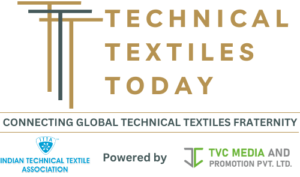In today’s sustainability-focused world, where ethical sourcing and high-performance materials are gaining priority, alpaca fiber is emerging as a luxurious yet functional textile solution. Once mainly associated with traditional Andean garments and artisanal crafts, alpaca fiber is now being reconsidered for broader use in technical and sustainable textile markets due to its superior properties—lightweight warmth, hypoallergenic nature, and durability.
Rethinking Alpaca: From Craft to Performance Material
Historically used by indigenous communities in Peru, Bolivia, and Ecuador for warm and durable garments adapted to high-altitude climates, alpaca fiber is gaining renewed attention from luxury and performance apparel brands. Compared to conventional fibers like cashmere and merino wool, alpaca is significantly more environmentally friendly, with lower water usage, minimal land degradation, and reduced methane emissions.
Advancements in fiber processing have led to finer yarns, expanding its applicability in lightweight apparel and technical clothing. Its natural thermoregulation, resistance to pilling and stretching, and inherent softness make alpaca ideal for outerwear and next-to-skin garments. Leading brands like Patagonia and Loro Piana are beginning to integrate alpaca blends, responding to the growing demand for ethically sourced, resilient luxury materials.
A Sustainable Alternative to Petroleum-Based Fibers
One of the strongest cases for alpaca’s future growth lies in its sustainability credentials. As the fashion industry faces growing criticism over the environmental impact of synthetic textiles such as polyester and nylon, natural alternatives like alpaca are gaining traction. Alpaca fiber is biodegradable, does not release microplastics, and requires minimal chemical processing.
According to a 2022 study by Textile Exchange, alpaca has the lowest carbon footprint per kilogram among fibers like merino wool and acrylic. It also uses 50% less water than sheep wool. Additionally, alpacas graze without uprooting vegetation, allowing for natural ecosystem regeneration in their native Andean habitats. These attributes make alpaca highly attractive to eco-conscious brands and consumers seeking traceable, low-emission textile solutions.
📄 Browse Report: https://www.futuremarketinsights.com/reports/alpaca-fiber-market
Market Trends and Rising Global Demand
Once largely limited to Peruvian exports, the global alpaca fiber market is expanding through micro-farms in the U.S., U.K., and Australia. This emerging supply chain emphasizes quality assurance, direct-to-consumer models, and fair trade certification.
With consumers leaning toward slow fashion—prioritizing durability, craftsmanship, and ethical sourcing—alpaca fiber is being promoted as a cruelty-free and hypoallergenic alternative to both wool and synthetics. Fashion and interior design brands are increasingly embracing alpaca for its blend of performance and sustainability.
Obstacles to Scalability and Mass Adoption
Despite its appeal, alpaca fiber faces scalability challenges. Limited global alpaca populations restrict supply, making the fiber costlier and less available than conventional alternatives. Additionally, the absence of uniform grading standards, low global awareness, and processing infrastructure gaps—especially in key Andean regions—act as hurdles to market growth.
However, rising investment in alpaca value chains and partnerships between local and international stakeholders could mitigate these challenges, enabling more efficient production and global distribution.
Future Outlook: From Niche to Mainstream in Luxury Textiles
As the global textile sector pivots toward transparency, circularity, and natural fiber innovation, alpaca fiber stands ready to evolve from a niche commodity to a mainstream sustainable textile. Technological advances in spinning and fabric blending are paving the way for alpaca’s use in performance outerwear, home furnishings, and even premium automotive interiors.
In the next decade, alpaca is expected to gain traction not just in volume but in cultural and environmental significance. With its unique blend of ethical sourcing, minimal ecological footprint, and superior functionality, alpaca fiber aligns perfectly with the values of the next-generation consumer.
Key Segments from the Report:
Wool Types: Huacaya & Suri
Grades: Ultra-fine to Robust (20–35 microns)
Applications: Apparel, Interior Textiles, Flooring, Industrial Felting
Regions: North America, Latin America, Europe, APEJ, MEA, Japan
